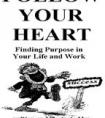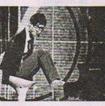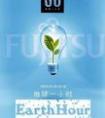We are now living in the modern society. Most of the energy we use for heating, lighting, transportation and manufacturing (制造业) comes from fossil (化石) fu-九年级英语
题文
小题1:___ the energy.There are three main disadvantages to using these fuels. Firstly, they are causing climate problems because of the G_ 小题2:___ Effect. When we burn fossil fuels they produce carbon dioxide which causes global warming. Secondly, when we have used up all our coal, oil and natural gas, we will have n__小题3:__ left to burn. Thirdly, they are not very efficient. The internal combustion engine (内燃机) that we use in most cars, trucks and buses, for example, is only about 14% efficient.Scientists are working on another fuel—hydrogen. There are a couple of advantages to using hydrogen as a fuel. Firstly, because two-thirds of the e__ 小题4:__ surface is water and water is made of hydrogen and oxygen. There is an almost unlimited supply of hydrogen. Secondly, burning hydrogen does not cause global warming. Thirdly, it is much more efficient than carbon-based fuels.Unfortunately there are problems with hydrogen at the present time: there is the problem of separating (分离) it from water c_ 小题5:___, and there is the difficulty of storing it. It can be stored under pressure but high pressure tanks are far from safe. It can also be stored as a liquid but only at extremely low temperatures. It seems likely, therefore, that there will have to be a completely new technology before hydrogen replaces fossil fuels. S__小题6:___ these problems is an urgent (急迫的) matter. Although China, India and Australia have huge amounts of cheap coal, and there are still l__小题7:___ oil and gas reserves(储藏量) elsewhere, the effects on the planet’s climate will be bad if they are used. |
答案
小题1:provides小题2:greenhouse小题3:nothing小题4:earth's小题5:cheaply小题6:Solving小题7:large |
试题分析:本文讲述了我们的矿产资源。我们的矿产资源都是有限的,不可再生的。现在的石油,天然气,因为燃烧的时候会放出热量,所以会引发温室效应。科学家们正在积极探索新的能源,以便使我们能够使用更干净,更清洁的能源。但是现实是这还需要很大的努力。 小题1:考查动词。句意:当我们烧燃料的时候会释放热量,这些热量提供了能量。Provide动词,提供。 小题2:考查名词。句意; 因为温室效应,他们正在引起气候的变化。Greenhouse Effect温室效应。小题3:考查不定代词。句意:当我们用光这些燃料的时候,我们就没有什么可以烧的了。 Nothing不定代词,什么都没有。小题4: 考查名词所有格。句意:地球的三分之二的表面是水。名词所有格是在名词之后加’s,表示……的。小题5:考查副词。句意:问题是把氢从水中分离出来很便宜,但是很难储存。Cheaply副词,便宜地。小题6:考查动词。句意:解决这些问题是十分迫切的难题。Solve动词,解决。动名词短语做主语,谓语动词用三单。小题7:考查形容词。句意;在某处仍然有很大的石油及天然气的储量。large大量的。 |
据专家权威分析,试题“ We are now living in the modern society. Most of the energ..”主要考查你对 物主代词,单词、词组 等考点的理解。关于这些考点的“档案”如下:
物主代词单词、词组
考点名称:物主代词
- 物主代词:
表示所有关系的代词叫做物主代词,也叫人称代词的所有格。
物主代词分为形容词性物主代词和名词性物主代词两种。
物主代词有人称和数的变化。第三人称单数的物主代词还有性别的变化。 物主代词的用法:
物主代词既有表示所属的作用又有指代作用,例如:
John had cut his finger; apparently there was a broken glass on his desk.
约翰割破了手指,显而易见,他桌子上有个破碎的玻璃杯。
物主代词有形容词性(my, your等)和名词性(mine, yours等)两种:
形容词性的物主代词属于限定词。
名词性的物主代词在用法上相当于省略了中心名词的 -'s属格结构,例如:
Jack's cap 意为 The cap is Jack's.
His cap 意为 The cap is his.形容词性物主代词用法:
1. 形容词性物主代词相当于形容词,在句中只能用作定语,后面必须跟名词。名词性物主代词常用来避免和前面已提及的名词重复。
相当于【形容词性物主代词+名词】。例如:
Is that yourbike? 那是你的自行车吗?
My pen is quite different from his.
2. 如果名词前用了形容词性物主代词,就不能再用冠词(a, an, the)、指示代词(this, that, these, those)等修饰词了。例如:
这是他的书桌。This is his desk.
3. 与形容词一起修饰名词时,形容词性物主代词要放在形容词的前面。例如:
his English books他的英语书。
their Chinese friends他们的中国朋友。
4. 汉语中经常会出现"我妈妈","你们老师"等这样的语言现象,虽然代词用的是"我"、"你们",但实际意义仍是"我的"、"你们的",
所以在英译时,注意要用形容词性物主代词"my","your"。
例如:你妈妈在家吗?
误:Is you mother at home?
正:Is yourmother at home?
5. it's与its读音相同,he's与his读音相似,但使用时需注意它们的区别(it's和he's分别是it is和he is的缩略形式,但its 和his 却是形容词性物主代词) 。
例如: It's a bird. Its name is Polly. 它是一只鸟。它的名字叫波利。
He's a student. His mother is a teacher. 他是一名学生。他妈妈是一位教师
口诀:
有“名”则"形“,无“名”则“名”。
意思是:后面是名词的话,前面就要用 形容词性物主代词。后面没有名词的话,就用名词性物主代词。名词性物主代词的句法功能:
a. 作主语,例如:
May I use your pen? Yours works better.
我可以用一用你的钢笔吗? 你的比我的好用。
b.作宾语,例如:
I love my motherland as much as you love yours.
我爱我的祖国就像你爱你的祖国一样深。
c.作介词宾语,例如:
You should interpret what I said in my sense of the word, not in yours.
你应当按我所用的词义去解释我说的话,而不能按你自己的意义去解释。
d.作主语补语,例如:
The life I have is yours. It's yours. It's yours. 我的生命属于你,属于你,属于你。
名词性物主代词可以用在介词of的后面,相当于“of+名词所有格”。
口诀
有“名”则"形“,无“名”则“名”。
注:
后面是名词的话,前面就要用 形容词性物主代词。
后面没有名词的话,就用名词性物主代词.形容词性物主代词与名词性物主代词的区别:
一.形容词性物主代词起形容词的作用,用在名词前。
- 最新内容
- 相关内容
- 网友推荐
- 图文推荐
| [家长教育] 孩子为什么会和父母感情疏离? (2019-07-14) |
| [教师分享] 给远方姐姐的一封信 (2018-11-07) |
| [教师分享] 伸缩门 (2018-11-07) |
| [教师分享] 回家乡 (2018-11-07) |
| [教师分享] 是风味也是人间 (2018-11-07) |
| [教师分享] 一句格言的启示 (2018-11-07) |
| [教师分享] 无规矩不成方圆 (2018-11-07) |
| [教师分享] 第十届全国教育名家论坛有感(二) (2018-11-07) |
| [教师分享] 贪玩的小狗 (2018-11-07) |
| [教师分享] 未命名文章 (2018-11-07) |


![—______ is Jenny.—I’m Gina. Nice to meet you.[ ]A. I’mB. His nameC. I’mD. My name-七年级英语](http://www.00-edu.com/d/file/ks/4/2/wuzhudaici/2019-11-29/small48b153aa794daeb090c5d2505d5cbbac1575042450.png)



